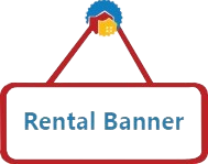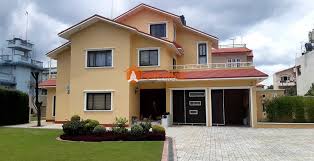“2025 Rental Market Forecast: What Owners Need to Know”
The 2025 rental market is poised for notable shifts that property owners should carefully consider. Here’s an overview of key trends:
1. Slowing Apartment Construction
After a surge in new apartment developments, construction is decelerating. Factors such as increased construction loan costs and stagnant rent growth have contributed to a 22% annual decline in new projects. This slowdown is expected to reduce the number of completed units to 350,000 in 2025 and 275,000 in 2026. Consequently, a tighter supply may lead to higher rents and increased property values.
2. Anticipated Rent Increases
Following a period of stabilized or declining rents due to an oversupply, demand is rebounding. This resurgence is likely to drive rent increases in 2025 and 2026, reversing recent trends of lower rental prices.
3. Persistent Rental Demand
High home prices continue to make renting a more viable option for many, sustaining strong demand in the rental market. This trend is expected to persist, further supporting potential rent increases.
4. Rising Investor Interest
Major investment firms are acquiring substantial property portfolios, anticipating that the combination of reduced new construction and sustained demand will lead to rent growth. This investor activity underscores confidence in the rental market’s profitability in the coming years.
5. Affordability Challenges
Despite potential benefits for property owners, the ongoing shortage of affordable housing remains a concern. The majority of new constructions have targeted middle- to upper-income households, leaving a scarcity of affordable rental options. This imbalance could influence policy decisions and tenant dynamics.
In summary, property owners should prepare for a rental market characterized by reduced new supply, increasing demand, and potential rent hikes. Staying informed about these trends will be crucial for strategic decision-making in 2025 and beyond.
:
2025 Real Estate Market Predictions (Key Trends for Landlords).The 2025 rental market is poised for notable shifts that property owners should carefully consider. Here’s an overview of key trends:
1. Slowing Apartment Construction
After a surge in new apartment developments, construction is decelerating. Factors such as increased construction loan costs and stagnant rent growth have contributed to a 22% annual decline in new projects. This slowdown is expected to reduce the number of completed units to 350,000 in 2025 and 275,000 in 2026. Consequently, a tighter supply may lead to higher rents and increased property values.
2. Anticipated Rent Increases
Following a period of stabilized or declining rents due to an oversupply, demand is rebounding. This resurgence is likely to drive rent increases in 2025 and 2026, reversing recent trends of lower rental prices.
3. Persistent Rental Demand
High home prices continue to make renting a more viable option for many, sustaining strong demand in the rental market. This trend is expected to persist, further supporting potential rent increases.
4. Rising Investor Interest
Major investment firms are acquiring substantial property portfolios, anticipating that the combination of reduced new construction and sustained demand will lead to rent growth. This investor activity underscores confidence in the rental market’s profitability in the coming years.
5. Affordability Challenges
Despite potential benefits for property owners, the ongoing shortage of affordable housing remains a concern. The majority of new constructions have targeted middle- to upper-income households, leaving a scarcity of affordable rental options. This imbalance could influence policy decisions and tenant dynamics.
In summary, property owners should prepare for a rental market characterized by reduced new supply, increasing demand, and potential rent hikes. Staying informed about these trends will be crucial for strategic decision-making in 2025 and beyond.
2025 Real Estate Market Predictions (Key Trends for Landlords).The 2025 rental market is poised for notable shifts that property owners should carefully consider. Here’s an overview of key trends:
1. Slowing Apartment Construction
After a surge in new apartment developments, construction is decelerating. Factors such as increased construction loan costs and stagnant rent growth have contributed to a 22% annual decline in new projects. This slowdown is expected to reduce the number of completed units to 350,000 in 2025 and 275,000 in 2026. Consequently, a tighter supply may lead to higher rents and increased property values.
2. Anticipated Rent Increases
Following a period of stabilized or declining rents due to an oversupply, demand is rebounding. This resurgence is likely to drive rent increases in 2025 and 2026, reversing recent trends of lower rental prices.
3. Persistent Rental Demand
High home prices continue to make renting a more viable option for many, sustaining strong demand in the rental market. This trend is expected to persist, further supporting potential rent increases.
4. Rising Investor Interest
Major investment firms are acquiring substantial property portfolios, anticipating that the combination of reduced new construction and sustained demand will lead to rent growth. This investor activity underscores confidence in the rental market’s profitability in the coming years.
5. Affordability Challenges
Despite potential benefits for property owners, the ongoing shortage of affordable housing remains a concern. The majority of new constructions have targeted middle- to upper-income households, leaving a scarcity of affordable rental options. This imbalance could influence policy decisions and tenant dynamics.
In summary, property owners should prepare for a rental market characterized by reduced new supply, increasing demand, and potential rent hikes. Staying informed about these trends will be crucial for strategic decision-making in 2025 and beyond.








Post Comment